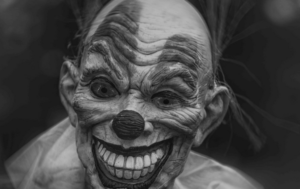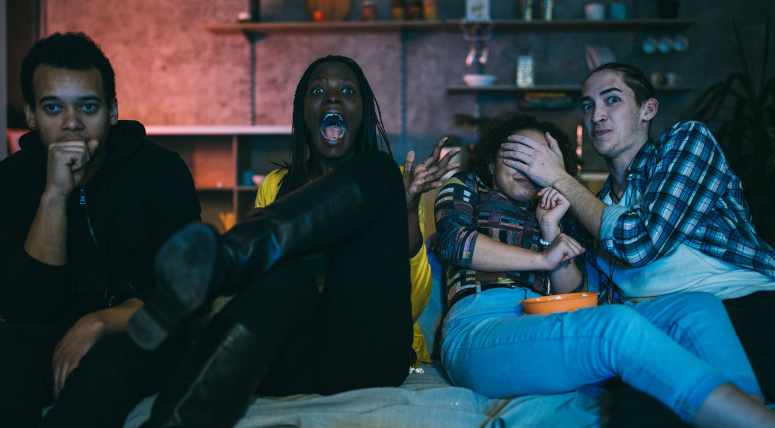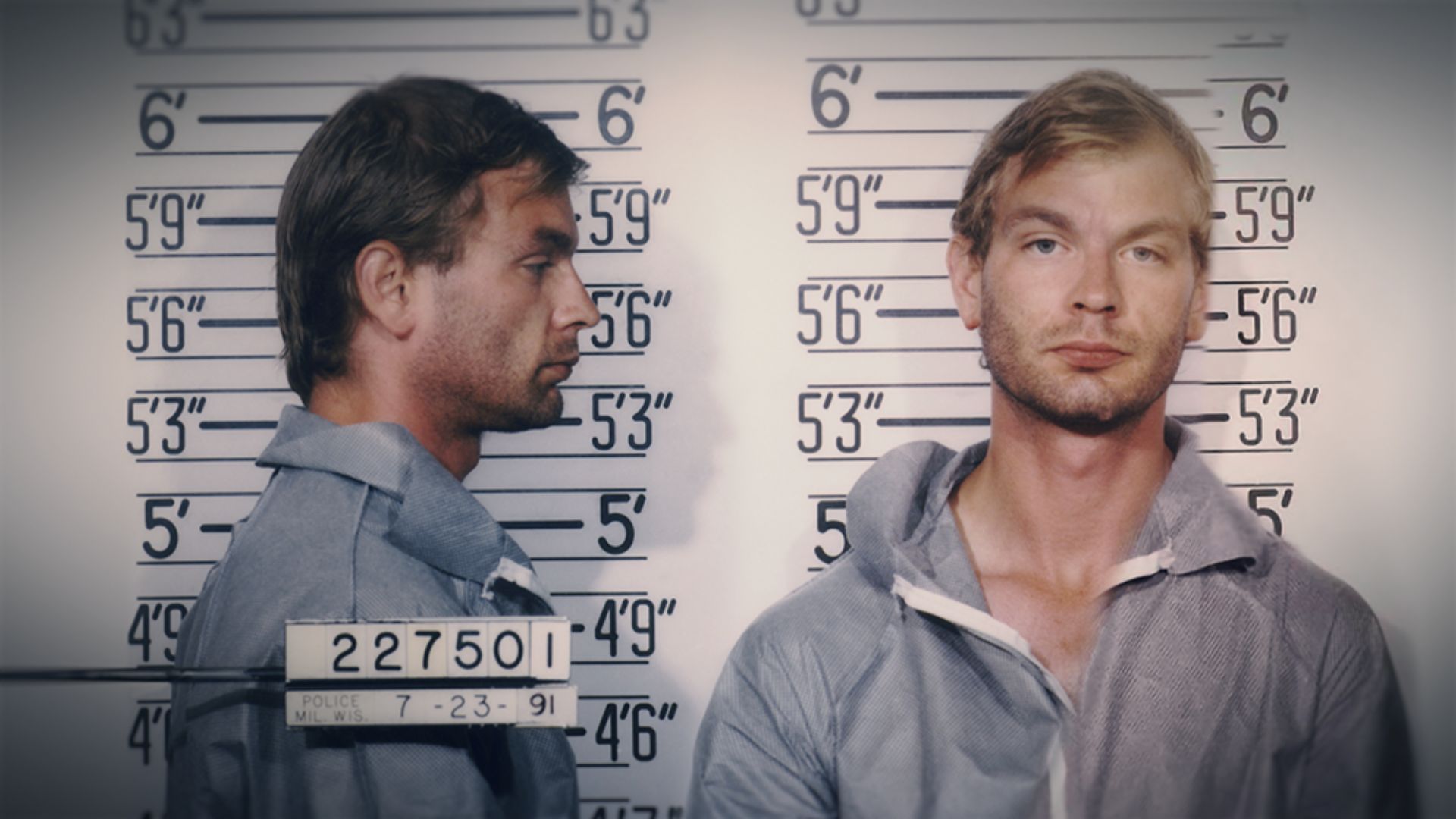Scary movies have a unique grip on our psyche, tapping into our deepest fears and leaving us with adrenaline-pumped hearts. This blog post delves into the psychological underpinnings of our fascination with the macabre, exploring why we willingly subject ourselves to the thrills and chills of scary movies.

The Thrill of the Chill: Fear as a Playground
As it turns out, fear isn’t just for the faint of heart. It’s a playground for the adventurous soul, a rollercoaster ride for our emotions. Scary movies tap into our primal fear response—that delicious surge of adrenaline that wakes us up and makes us feel alive. It’s a controlled dose of danger, a safe space to confront our anxieties and emerge feeling a little braver, a little more in tune with our vulnerability.
Scary Movies as Mirrors to Our Souls
But it’s not just the adrenaline rush. Scary movies act as mirrors, reflecting our deepest fears and anxieties. That shadowy figure lurking in the closet? Maybe it’s our fear of failure or the doubts gnawing at our confidence. Is a vengeful ghost haunting the halls? Perhaps it’s a past trauma we haven’t fully confronted. By confronting these monsters on screen, we can start to understand, process, and maybe even overcome them in real life.
Community and Catharsis
Let’s be honest, screaming alone in the dark is fun, but screaming with a group of friends is pure magic. Scary movies bring us together, creating a shared experience that bonds us through laughter, gasps, and maybe even tears. We laugh at the absurdity, comfort each other during the jump scares, and emerge feeling closer and more connected to our fellow horror-loving humans.
The Dark Side of Wonder
Scary movies aren’t just about cheap thrills and jumping scares. They can be surprisingly beautiful, weaving narratives that explore the depths of human nature, the complexities of morality, and the very essence of what it means to be alive. From the hauntingly poetic imagery of a Guillermo del Toro masterpiece to the chilling yet strangely captivating score of a psychological thriller, scary movies can be a gateway to artistic expression that pushes boundaries and forces us to confront uncomfortable truths.
Scary Movies Allows Us To Escape Reality
Sometimes, the allure of scary movies lies in pure escapism. We get to step outside our safe little bubbles and inhabit worlds where the rules are bent, the shadows whisper secrets, and anything is possible. We become warriors battling the undead, cunning detectives unravelling sinister plots, or even the final girl outsmarting the masked killer. In these terrifying tales, we’re not passive victims; we’re the heroes, the survivors, the ones who rise above the darkness. And that, my friends, is pretty damn empowering.
The Science of Scary Movies
But let’s not forget the science behind the screams. Scary movies trigger a fascinating physiological response. Our heart rate quickens, our palms sweat, and our pupils dilate. We’re primed for action, ready to fight or flee. This rush of adrenaline, coupled with the release of endorphins (nature’s feel-good chemicals), creates paradoxical pleasure. It’s like riding a roller coaster—terrifying but exhilarating, leaving us wanting more.
A Final Note
Of course, not everyone enjoys a good scare. Some folks prefer their popcorn with sunshine and rainbows, and that’s perfectly okay. But for those of us who crave the thrill of a well-crafted nightmare, the beauty of the grotesque, and the chance to confront our inner demons in a safe space, scary movies offer a unique and powerful experience. They remind us that we’re alive, that we feel deeply, and that even in the face of terror, we can find laughter, connection, and maybe even a little bit of ourselves.
Final Thoughts
So, grab your friends, dim the lights, and pop that popcorn. It’s time to dive into the darkness, not with fear, but with curiosity, a healthy dose of scepticism, and a willingness to be surprised by the monsters, the metaphors, and the magic that lurk just beyond the edge of your screen. After all, in the words of Vincent Price, “You have to let the little monsters out once in a while, or they’ll eat you from the inside.”



